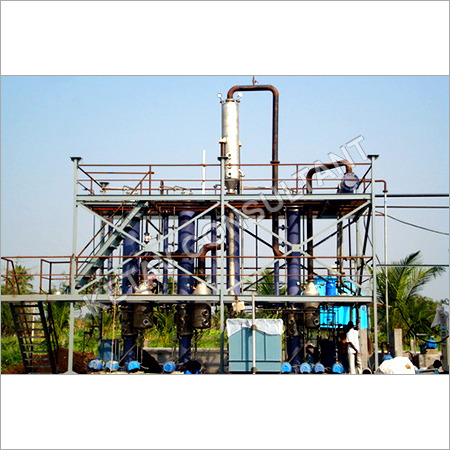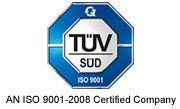Product Description
Supported by the team of dexterous professionals, we are able to manufacture and supply excellent functionality Water Pollution Control System. Post production, our control system is thoroughly checked on various rigorous parameters so as to ensure of its high efficiency. Clients highly appreciate our control system for its salient features like excellent performance and longer working life. Water Pollution Control System is extensively being used for purifying contaminated water so as to make it suitable for further usage.
Features:
- High operational efficiency
- Robust construction
- High corrosion & chemical resistance
- Minimal maintenance
An Efficient Way To Control Water Pollution
As we all know that water is one of the essential resources that is used by living organisms to fulfill their various needs. However, this natural resource is being exploited with each passing day due to the increased pollution. This pollution is generally caused due to the chemical wastage from the industry. Taking this aspect into consideration, we offer Water Pollution Control System in order to reverse the harmful effects of water pollution that otherwise will be almost impossible. By employing the mentioned system, pollution can be controlled up to a large extent as it improves the waste management by treating it well before its discharge and disposal into water bodies.
How Does It Works?
With the help of the offered system, toxic and harmful waste content is minimized and using the secondary treatment, this water can be used in the sanitary systems or the agricultural fields.
Advanced Stainless Steel ConstructionThe Water Pollution Control System is fabricated from high-grade stainless steel, offering exceptional resistance to corrosion and a long operational lifespan. The robust silver body not only provides a professional appearance but also facilitates easy maintenance, making it ideal for use in challenging industrial settings across India.
Intelligent Automatic OperationsHarnessing PLC control, the system automates critical pollution control processes, enhancing precision while reducing manual oversight. Its electric drive combined with a reliable water cooling system ensures steady and energy-efficient functioning, even under demanding operational conditions.
FAQs of Water Pollution Control System:
Q: How does the Water Pollution Control System operate automatically?
A: This system relies on a PLC (Programmable Logic Controller) control unit to monitor and manage its operation. The automatic grade enables it to function with minimal manual intervention, adjusting processes in real time to maintain optimal pollution control performance.
Q: What are the key benefits of using a stainless steel Water Pollution Control System?
A: Stainless steel construction provides excellent durability, corrosion resistance, and hygiene. This translates to a longer lifespan for the system, reduced maintenance needs, and reliable operation even with continuous exposure to various water pollutants.
Q: Where can the Water Pollution Control System be installed?
A: This system can be installed in industrial facilities, manufacturing plants, and any setting that requires water pollution abatement. With its voltage compatibility (120440V) and robust construction, it is suitable for diverse environments across India.
Q: When should regular maintenance be performed on the system?
A: Routine maintenance should be conducted according to the manufacturers guidelines, typically involving periodic inspections of the cooling system, PLC control, and stainless steel surfaces. Regular servicing helps ensure peak efficiency and longevity.
Q: What process does the system use for pollution control in water?
A: The system employs multi-stage filtration and chemical treatment managed by PLC controls. It systematically removes contaminants, using water-cooling to stabilize temperatures and optimize treatment efficacy during the pollution control process.
Q: How energy-efficient is the Water Pollution Control System?
A: Thanks to its electric drive and advanced automation, the system uses energy efficiently. The water cooling system reduces thermal losses, allowing the equipment to run smoothly without excessive power consumption.











